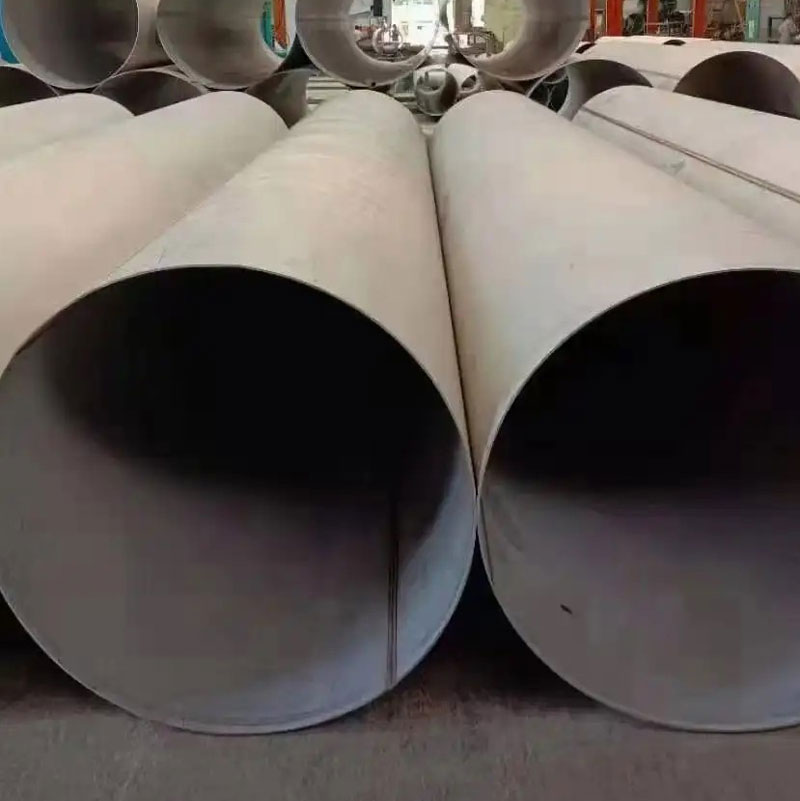Corrosion Resistance Comparison Between 304 and 316L Stainless Steel Welded Pipes
The corrosion resistance comparison between 304 and 316L stainless steel welded pipes reveals how even small compositional changes can have a major impact on performance in harsh environments.
At Ganyeah Group, a trusted manufacturer of stainless steel welded and seamless pipes, we understand that material selection is crucial for achieving long-term durability and corrosion protection. Among the many grades available, 304 and 316L stainless steels are two of the most widely used—but their corrosion resistance differs significantly due to variations in molybdenum and carbon content.

316L stainless steel welded pipes producted by Ganyeah
1. Chemical Composition Differences
The corrosion resistance difference between 316L stainless steel welded pipe and 304 stainless steel welded pipe mainly arises from their chemical composition, particularly the addition of molybdenum (Mo) and control of carbon (C) content.
| Element | 304 Stainless Steel | 316L Stainless Steel | Impact |
|---|---|---|---|
| Chromium (Cr) | 18–20% | 16–18% | 304 relies on Cr for passivation; 316L enhances passivation stability through Mo. |
| Nickel (Ni) | 8–10.5% | 10–14% | Higher Ni in 316L improves ductility and corrosion resistance in reducing conditions. |
| Molybdenum (Mo) | None | 2–3% | Significantly boosts resistance to chloride-induced pitting and crevice corrosion. |
| Carbon (C) | ≤0.08% | ≤0.03% | Low carbon in 316L reduces intergranular corrosion after welding. |
2. Corrosion Resistance Comparison
(1) Chloride Corrosion Resistance
316L stainless steel welded pipe exhibits outstanding resistance to chloride attack due to its MoO₄²⁻ component, which reinforces the Cr₂O₃ passive film.
In chloride-rich environments like seawater or saline solutions, the corrosion rate of 316L is only one-third to one-fifth that of 304.
For instance, in 3.5% NaCl solution, the critical crevice corrosion temperature (CCT) of 316L reaches 60–80°C, while 304 only performs up to 40–50°C.
304 stainless steel welded pipe lacks Mo, making its passive film vulnerable to Cl⁻ penetration and localized corrosion over time.
(2) High-Temperature Oxidation
At 600–700°C, 316L forms a stable Cr₂O₃–MoO₃ composite oxide film that minimizes oxidation loss and prevents CrCl₃ volatilization.
In comparison, 304’s oxide film becomes unstable above 800°C, accelerating oxidation and “active corrosion” under Cl⁻ exposure.
(3) Pitting and Crevice Corrosion
316L stainless steel has a Pitting Resistance Equivalent Number (PREN) of 32–38, much higher than 304’s 20–24, giving it 3–5 times longer pitting initiation periods and 70% slower pit growth rates.
(4) Intergranular Corrosion Resistance
316L’s ultra-low carbon design prevents chromium carbide precipitation during welding, maintaining grain boundary integrity.
Conversely, 304 is more prone to intergranular corrosion in the heat-affected zone, requiring post-weld annealing to restore corrosion resistance.

ASTM A312 TP304 Stainless Steel Welded Pipes Finished By Ganyeah Holding Group
3. Corrosion Behavior in Typical Environments
| Environment | 316L Performance | 304 Performance |
|---|---|---|
| Seawater / Salt Spray | Stable passive film, long-term durability | Pitting after 1–2 years, possible perforation in 5–10 years |
| Chloride-Containing Chemicals | Resists up to 1000 ppm Cl⁻, suitable for chemical reactors and piping | Corroded easily above 100 ppm Cl⁻ concentration |
| High-Temperature Acidic Gas | Excellent resistance at 300–600°C to HCl/SO₂ gases | Rapid corrosion above 200°C under HCl vapor |
| Medical Sterilization Environment | Withstands repeated NaClO disinfection without intergranular cracking | Cracks may form after frequent sterilization |
4. Material Selection Recommendation
As a global supplier of stainless steel welded pipes, Ganyeah Group provides tailored solutions based on corrosion resistance requirements:
- Choose 316L Stainless Steel Welded Pipes
For marine, offshore, and chemical process systems exposed to chloride or high-temperature corrosive media. - Choose 304 Stainless Steel Welded Pipes
For architectural, decorative, and non-corrosive applications where cost-effectiveness is key.
Our engineering team helps customers evaluate life-cycle costs and operational environments to ensure the optimal material is selected for every project.
5. Cost and Service Life Balance
Although 316L welded pipes cost 30–50% more than 304, they offer 3–5 times longer service life in chloride or acidic conditions.
For long-term installations, Ganyeah Group recommends 316L as the most reliable and sustainable choice—reducing maintenance downtime and total ownership cost.
Through this corrosion resistance comparison between 304 and 316L stainless steel welded pipes, it is evident that 316L provides superior durability in aggressive chloride and high-temperature environments.
At Ganyeah Group, we manufacture both grades according to international standards (ASTM, ASME, EN), ensuring consistent quality and long-lasting corrosion protection.
Whether for chemical plants, marine systems, or industrial pipelines, choosing the right stainless steel welded pipe from Ganyeah Group ensures performance, safety, and reliability for decades of service.
